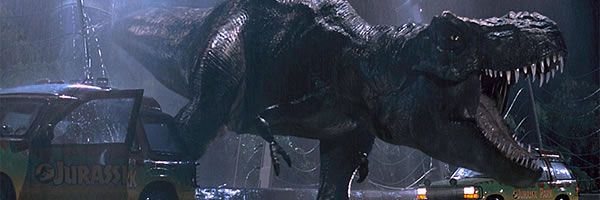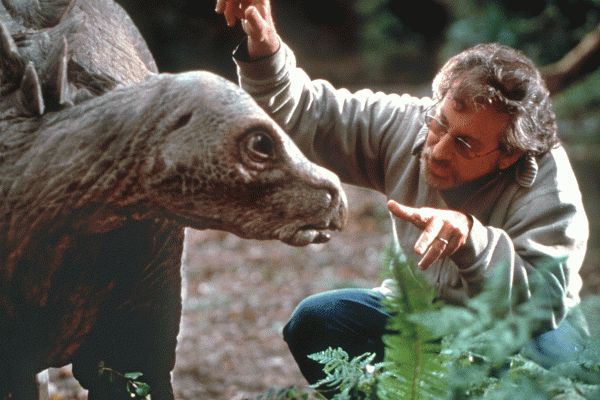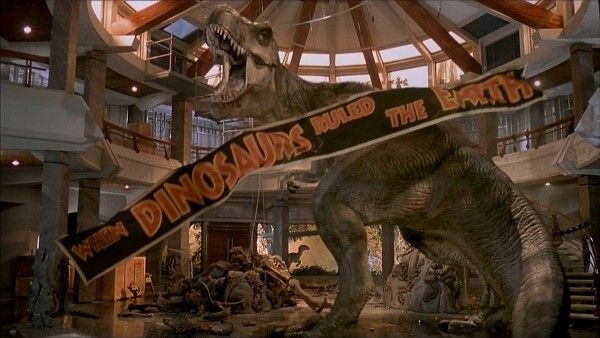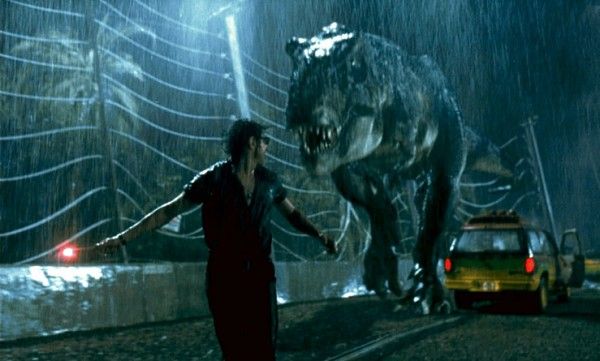Given its stone-cold classic status, the stories about the behind-the-scenes production of Jurassic Park are pretty well known by now. Most people are aware that Steven Spielberg was originally planning to use stop-motion to animate the dinosaurs until he saw the first examples of CGI on Young Sherlock Holmes and in T2: Judgment Day. And most people know that the animatronic Tyrannosaurus Rex had some trouble with water.
But now another story has emerged, and it’s pretty fantastic. Kathleen Kennedy is now the president of Lucasfilm, but before that she was Spielberg’s longtime producer, working on nearly every one of his films since E.T. Of course now Kennedy is producing the new Star Wars saga, and in anticipation of the release of Star Wars: The Force Awakens, she appeared on the Nerdist podcast and shared a great story about a major change that was made to Jurassic Park in the middle of filming:
“I was sitting by the monitor one time with Steven on Jurassic and about halfway through the movie we killed the T. Rex. He was sitting there and he goes, ‘Guys, guys come here—we can’t kill the T. Rex!’ He had been watching the movie in his head as we’re shooting, and we’re halfway through the process and we’re nearing the moment where we’re gonna shoot the scene where we kill the T. Rex and he’s like, ‘No, the T. Rex is the star of the movie. We can’t kill him.’ So we called the production designer Rick Carter over and we, literally right by the monitor, started to talk about how we were going to change the next scene and the entire end of the film as we were making it, so that we could keep our leading actor, the T. Rex, alive.”
This is a fascinating bit of insight into one of the best films in history, and it also speaks to one major misconception about moviemaking: you don’t have to have it all nailed down 100% before filming in order to make a brilliant film. Of course it helps when your screenplay is pristine, and it can just as often lead to disaster when trying to make course corrections during production (ahem Fantastic Four), but once the first frame of film begins to roll, the movie has changed from something written on a page to something that lives and breathes. It’s not going to be exactly what was on the script, and sometimes that means some tweaks and alterations—sometimes minor, sometimes huge—are necessary.
This reminds me of something Mission: Impossible – Rogue Nation writer/director Christopher McQuarrie said in our interview with the filmmaker yesterday. He faced a similar dilemma on Rogue Nation and reworked the whole ending during filming, and when asked what he learned on the production, McQuarrie responded with this piece of fried gold:
“The lesson I learned is that a plan is not a guarantee of success and chaos is not a guarantee of failure.”
Print that, frame it, and commit it to memory the next time you hear about script changes or reshoots. Again, these types of changes don’t always work out for the best, but in Steven Spielberg’s case, it gave us one of cinema’s most striking images.
Take a listen to the full podcast episode below, which is a really interesting, compelling chat.




